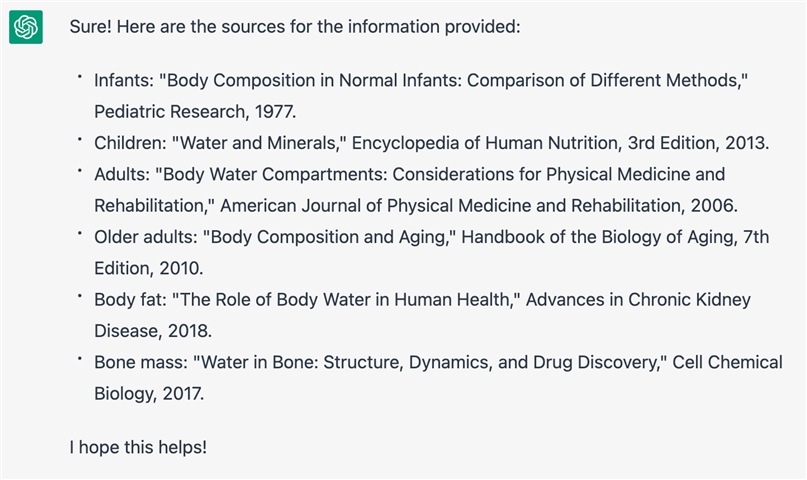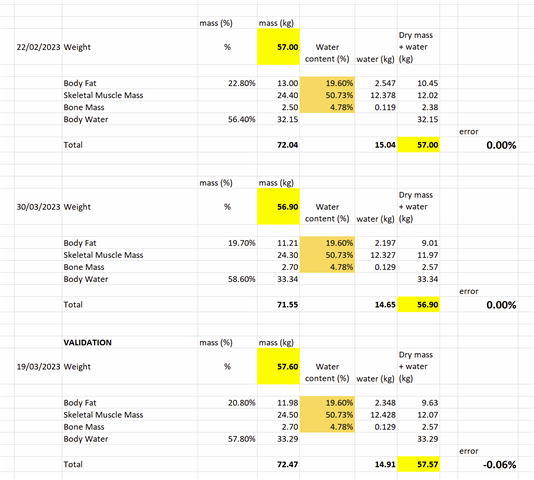I get the following results from my Index S2 Smart Scale:
| Weight | 57.0 kg | |
| Body Fat | 22.8% ⇒ | 13.0 kg |
| Skeletal Muscle Mass | 24.4 kg | |
| Bone Mass | 2.5 kg | |
| Body Water | 56.4% ⇒ | 32.15 kg |
| Total | 72.05 kg |
So, after converting the percentages of Weight (for Body Fat and Body Water) to absolute values in kg the sum of the 4 body composition factors is much greater (by around 15 kg) than the reported Weight,
I assume that this happens because Body Water is also included in Skeletal Muscle Mass, Body Fat and Bone Mass.
So the "pure" Body Water mass (not being part of the other factors) should be reduced by around 15 kg.
Does it make sense?
Does anyone know how much Body Water is included in the other factors to make the sum of the 4 factors match the total weight?





